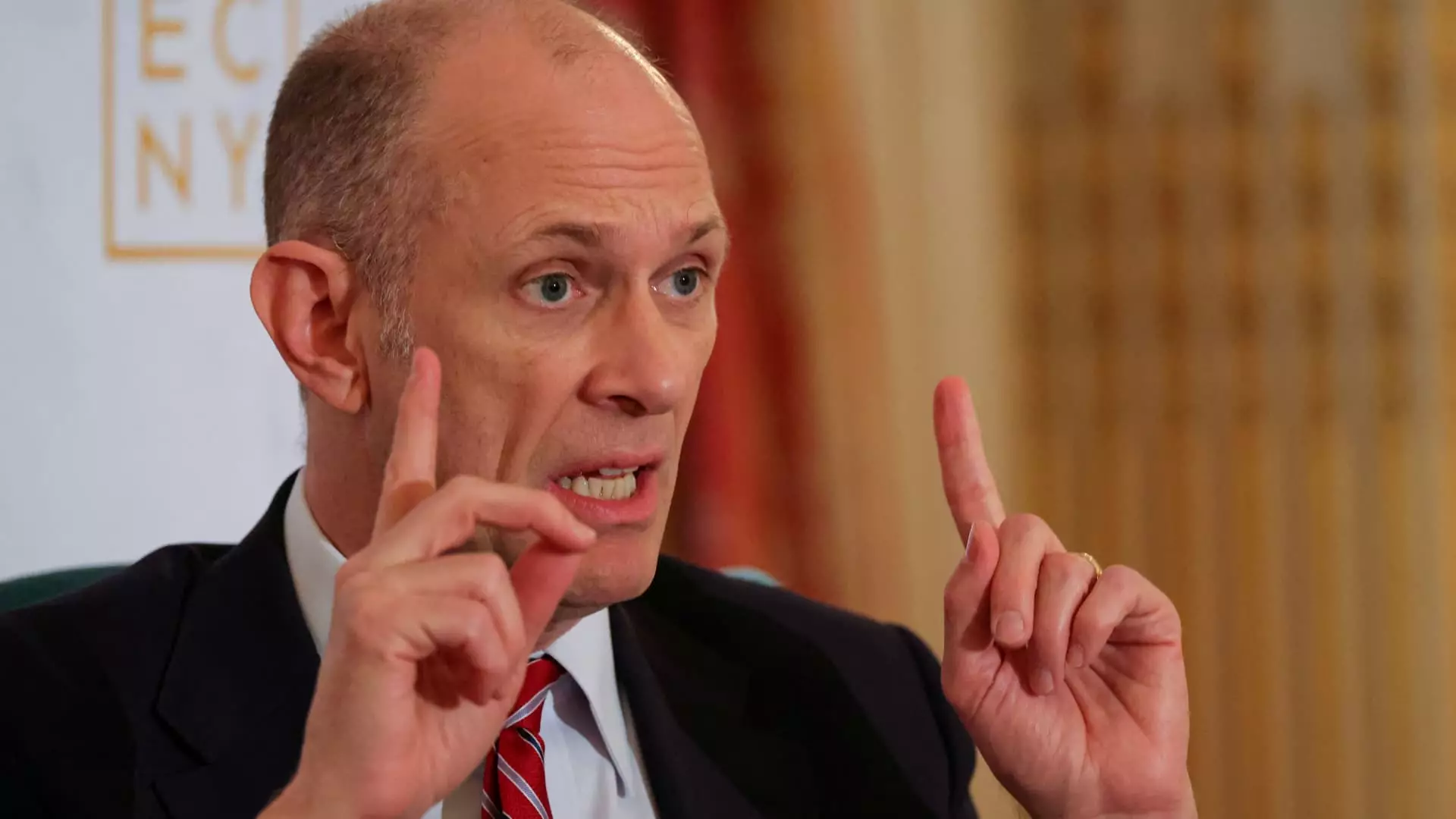In the world of economic policy, few variables have as profound an impact as trade. Recent statements from Austan Goolsbee, the President of the Chicago Federal Reserve, illustrate the complex interplay between trade negotiations and interest rates. With the looming threats of tariffs from former President Donald Trump, Goolsbee has expressed a heightened sense of caution regarding upcoming interest rate adjustments. In an era where trade wars generate daily headlines, the ramifications for monetary policy are immense and multifaceted.
Goolsbee’s commentary suggests that tariffs complicate the already intricate decisions facing the Federal Reserve. By signaling uncertainty in trade, he implies that potential changes to interest rates are on hold while the Fed assesses how these tariffs might influence inflation and employment metrics. It’s a cautious yet realistic response from a central bank official who understands that economic indicators do not exist in a vacuum. As details around trade agreements morph constantly, so do the assessments of inflationary pressures and job stability.
Inflation: The Central Bank’s Quagmire
The fear of inflation is palpable, a recurring theme that Goolsbee touched upon during a recent interview on CNBC’s “Squawk Box.” Tariffs, if enacted, can exacerbate inflation, creating a fraught environment for consumers and policymakers alike. The long-term threat of stagflation—a situation characterized by stagnant economic growth combined with high inflation—casts a shadow over the Fed’s decision-making process. Here lies a paradox: While tariffs could yield short-term gains for certain sectors, they may also trigger broader inflationary consequences that could undermine economic stability.
This constant push and pull between protecting domestic industries and ensuring a harmonious economic environment complicates the messaging of central bankers. Goolsbee voiced a sentiment echoed by many economists: if tariffs lead to notable price increases, the Fed may have to step in, adjusting rates in response to the new inflationary landscape. This scenario becomes even more crucial given that the current benchmark borrowing rate hovers between 4.25% and 4.5%, a narrow range that limits the Fed’s maneuverability in addressing inflationary trends.
Market Reactions: A Volatile Future
Market reactions to Trump’s tariff threats are instantaneous and often dramatic. By calling for a 50% tariff on imports from the European Union and singling out technology giant Apple with a significant tariff on its iPhones, the former president has stirred the financial markets into a frenzy. Goolsbee’s acknowledgment of these actions underlines the delicate balance the Fed must maintain as it seeks to navigate through the noise of market volatility.
The reality is that rising tariffs can produce detrimental effects, not just in terms of prices but also in consumer behavior and business investment strategies. Consumers might hesitate in making large purchases, fearing that prices could surge, while businesses may delay investments in growth due to uncertainty about future costs and market conditions. Consequently, this nervousness can ripple through the economy, creating a feedback loop of reduced demand and stunted economic growth.
The Road Ahead: Caution Amid Optimism
Despite the chaotic environment, Goolsbee conveyed a sense of tempered optimism, hinting at potential economic resilience in the long run. He emphasized the possibility of stabilizing growth, even amidst the tumult generated by trade negotiations. This glimmer of hope – the belief that economic fundamentals such as employment and inflation will remain steady – signals a desire to return to a more stable financial environment.
However, the intricacies of this optimism are nuanced. Goolsbee is aware that the Fed’s reactions must remain adaptable to shifting parameters. With a crucial Federal Open Market Committee meeting on the horizon, the stakes are high. Decision-makers will need to reconcile their projections with the uncertain ramifications of ongoing trade policies. As Goolsbee articulated, he wishes to avoid committing to any rigid course of action that may restrict future flexibility.
In essence, the tug of war between trade and monetary policy underscores the complexity of economic governance in a globalized world. The optimistic projections made by Fed officials must be tempered by a recognition of the volatility inherent in trade policies. As we enter the next chapter of economic decision-making, industry leaders, policymakers, and consumers will watch closely, awaiting clarity in an intricate web of policies that affect us all.

